
漢德百科全書 | 汉德百科全书
 Medieval cities in Europe
Medieval cities in Europe
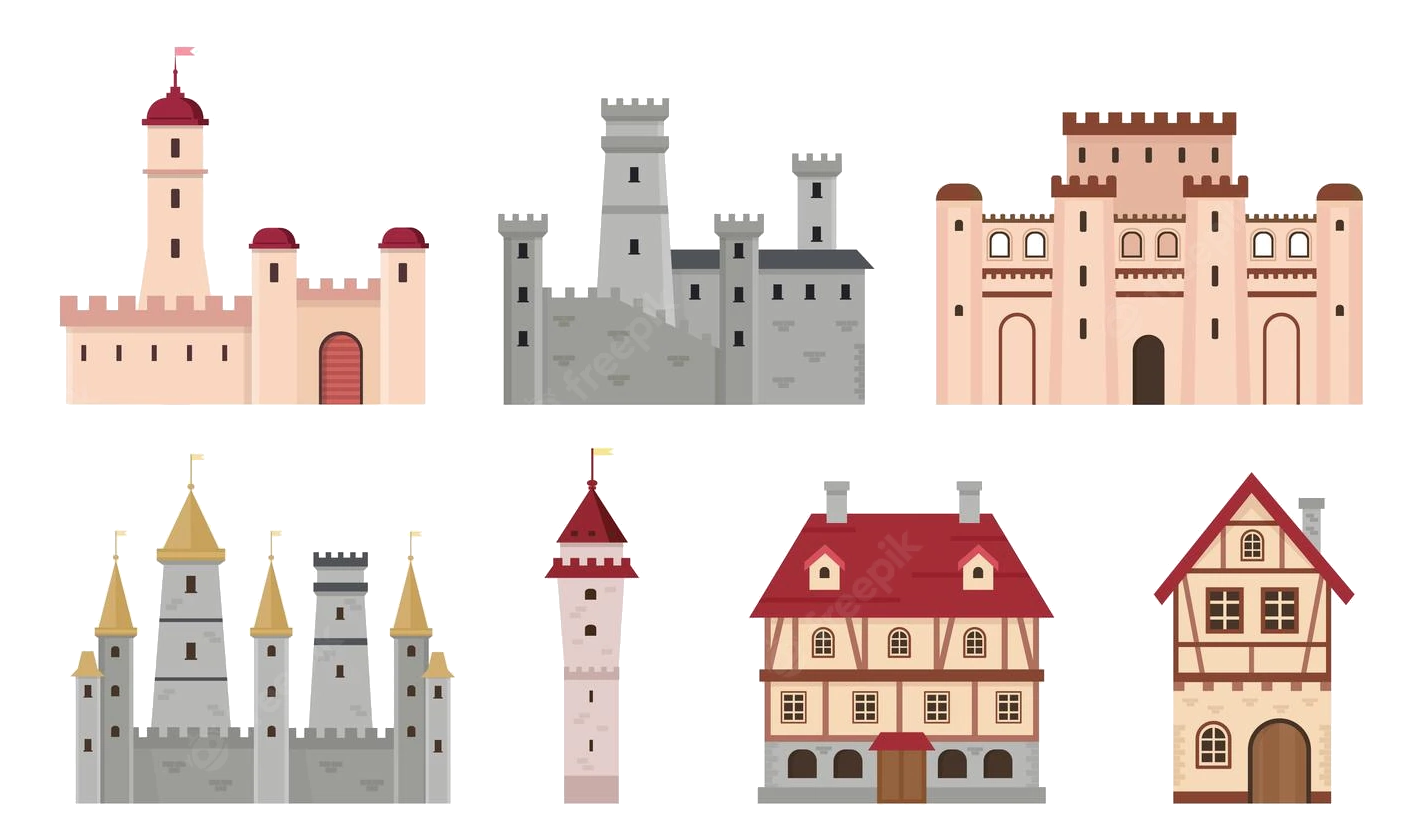

Ávila ist die Hauptstadt der gleichnamigen Provinz in der spanischen Region Kastilien-León. Sie hatte am 1. Januar 2019 57.744 Einwohner. Im 16. Jahrhundert war Ávila die Wirkungsstätte der hl. Teresa. Zusammen mit Toledo und Segovia gehört die Stadt zu den drei historischen Zentren in der Umgebung der spanischen Hauptstadt. Seit 1985 gehört sie zum Weltkulturerbe der UNESCO.
阿维拉(西班牙语:Ávila),又译为亚维拉,是西班牙中部的一座城市,也是阿维拉省的省会,属于卡斯蒂利亚-莱昂自治区。阿维拉的旧城区和城墙外的教堂群被列入世界文化遗产。

Assisi ist eine Stadt mit 28.379 Einwohnern (Stand 31. Dezember 2016) im mittelitalienischen Umbrien in der Nähe der Regionalhauptstadt Perugia. Sie ist Geburtsort des Hl. Franz von Assisi (auch Hl. Franziskus), des Gründers der Minderen Brüder (heute: Franziskaner oder Minoriten) und der Hl. Klara, der Gründerin des Klarissenordens.
Das mittelalterliche Stadtbild mit Stadtmauer und Festungsruine Rocca Maggiore ist noch gut erhalten und wurde im Jahr 2000 zum Weltkulturerbe der UNESCO ernannt.
阿西西 (意大利语:Assisi,天主教中文译作“亚西西”)是意大利翁布里亚大区佩鲁贾省的一个城市,位于苏巴修山的西侧。
阿西西是亚西西的方济各的诞生地,他于1208年在此创立方济各会;也是亚西西的圣嘉勒的出生地,她创立了贫穷修女会。19世纪的痛苦圣母加俾额尔也出生在这里。
2000年,亚西西的圣方济各圣殿和其他方济各会建筑被列为世界遗产。
1986年以来,世界宗教领导人会议不定期举行。
Assisi (Italian pronunciation: [asˈsiːzi], from the Latin: Asisium) is a town and comune of Italy in the Province of Perugia in the Umbria region, on the western flank of Monte Subasio.
It is generally regarded as the birthplace of the Latin poet Propertius, born around 50–45 BC. It is the birthplace of St. Francis, who founded the Franciscan religious order in the town in 1208, and St. Clare (Chiara d'Offreducci), the founder of the Poor Sisters, which later became the Order of Poor Clares after her death. The 19th-century Saint Gabriel of Our Lady of Sorrows was also born in Assisi.
Assise (en italien Assisi) est une ville italienne d'environ 28 100 habitants, située dans la province de Pérouse (Perugia) en Ombrie (Umbria).
Assise est surtout célèbre pour son apogée médiéval et pour être le lieu de naissance et de mort de Francesco Bernardone, plus connu sous le nom de François d'Assise, un des plus grands saints de l'Église catholique romaine. Pour son patrimoine exceptionnel, la ville est classée sur la liste du patrimoine mondial de l'Unesco.
Assise a été le siège de plusieurs rencontres interreligieuses, connues sous le nom de rencontres d'Assise, en 1986, 1993, 2002, et 2011.
Asís (en latín: Asisium, en italiano: Assisi) es una ciudad y comune en la provincia de Perugia región de Umbría, en Italia.
Según el censo de 2007, la municipalidad contaba con 26.000 habitantes en un término municipal de 187 km². La ciudad en sí cuenta con una población de cerca de 5.500 personas. Tras las elecciones de 2006, el ayuntamiento está regido por Claudio Ricci (PdL).
Sede episcopal relevante, es además la ciudad donde nacieron san Francisco de Asís, fundador en 1208 de la orden Franciscana o "franciscanos", y santa Clara de Asís (Chiara d’Offreducci), fundadora de la Orden de las hermanas pobres de Santa Clara o "clarisas".

 Eurovision Song Contest,ESC
Eurovision Song Contest,ESC

 Financial
Financial
 ***Global Financial Center
***Global Financial Center

 History
History
 N 2000 - 2100 AD
N 2000 - 2100 AD

 History
History
 M 1500 - 2000 AD
M 1500 - 2000 AD

 Medieval cities in Europe
Medieval cities in Europe
 Schottland
Schottland
 United Kingdom
United Kingdom

Edinburgh  [ˈɛdɪnb(ə)ɹə][2] (schottisch-gälisch Dùn Èideann [tuːn ˈeːtʃən]; dt. Edinburg; amtlich City of Edinburgh) ist seit dem 15. Jahrhundert die Hauptstadt von Schottland (bis dahin war es Perth). Seit 1999 ist Edinburgh außerdem Sitz des Schottischen Parlaments. Edinburgh ist mit etwa 493.000 Einwohnern nach Glasgow die zweitgrößte Stadt Schottlands und seit 1996 eine der 32 schottischen Council Areas. Die Stadt liegt an Schottlands Ostküste auf der Südseite des Firth of Forth gegenüber von Fife.
[ˈɛdɪnb(ə)ɹə][2] (schottisch-gälisch Dùn Èideann [tuːn ˈeːtʃən]; dt. Edinburg; amtlich City of Edinburgh) ist seit dem 15. Jahrhundert die Hauptstadt von Schottland (bis dahin war es Perth). Seit 1999 ist Edinburgh außerdem Sitz des Schottischen Parlaments. Edinburgh ist mit etwa 493.000 Einwohnern nach Glasgow die zweitgrößte Stadt Schottlands und seit 1996 eine der 32 schottischen Council Areas. Die Stadt liegt an Schottlands Ostküste auf der Südseite des Firth of Forth gegenüber von Fife.
爱丁堡(英语:Edinburgh, i/ˈɛdɪnbərə/[4]、苏格兰盖尔语:Dùn Èideann),是英国苏格兰首府,也是继格拉斯哥后苏格兰的第二大城市,位于苏格兰东海岸福斯湾南岸。截止到2013年,全市人口为487,500。[3]
i/ˈɛdɪnbərə/[4]、苏格兰盖尔语:Dùn Èideann),是英国苏格兰首府,也是继格拉斯哥后苏格兰的第二大城市,位于苏格兰东海岸福斯湾南岸。截止到2013年,全市人口为487,500。[3]
自15世纪以来爱丁堡就被当做苏格兰首府,但在1603年和1707年政治力量多次南移到伦敦。1999年苏格兰议会的自治权利才得以确立。苏格兰国家博物馆、苏格兰国家图书馆和苏格兰国家画廊等重要文化机构也位于爱丁堡。在经济上,现在的爱丁堡主要依靠金融业,是伦敦以外英国最大的金融中心。[5]
爱丁堡有着悠久的历史,许多历史建筑亦完好保存下来。爱丁堡城堡、荷里路德宫、圣吉尔斯大教堂等名胜都位于此地。爱丁堡的旧城和新城一起被联合国教科文组织列为世界遗产。[6]2004年爱丁堡成为世界第一座文学之城。[7]爱丁堡的教育也很发达,英国最古老的大学之一爱丁堡大学就坐落于此,为一所历史超过四百年的世界顶尖名校。[8]加上爱丁堡国际艺术节等文化活动,爱丁堡成为了英国仅次于伦敦的第二大旅游城市。
エディンバラ(英語: Edinburgh [ˈɛdɪnbərə] (![]() 音声ファイル)、スコットランド・ゲール語: Dùn Éideann [ˈt̪uːn ˈɛːtʲɛn̪ˠ])は、スコットランドの首都であり、ロージアン州の州都。日本語では「エジンバラ」とも表記される。
音声ファイル)、スコットランド・ゲール語: Dùn Éideann [ˈt̪uːn ˈɛːtʲɛn̪ˠ])は、スコットランドの首都であり、ロージアン州の州都。日本語では「エジンバラ」とも表記される。
Edinburgh (/ˈɛdɪnbərə/ ( listen);[6][7][8] Scottish Gaelic: Dùn Èideann [ˈt̪uːn ˈeːtʲən̪ˠ]; Scots: Edinburgh) is the capital city of Scotland and one of its 32 council areas. Historically part of the county of Midlothian (or Edinburghshire), it is located in Lothian on the Firth of Forth's southern shore.
listen);[6][7][8] Scottish Gaelic: Dùn Èideann [ˈt̪uːn ˈeːtʲən̪ˠ]; Scots: Edinburgh) is the capital city of Scotland and one of its 32 council areas. Historically part of the county of Midlothian (or Edinburghshire), it is located in Lothian on the Firth of Forth's southern shore.
Recognised as the capital of Scotland since at least the 15th century, Edinburgh is the seat of the Scottish Government, the Scottish Parliament and the supreme courts of Scotland. The city's Palace of Holyroodhouse is the official residence of the monarchy in Scotland. The city has long been a centre of education, particularly in the fields of medicine, Scots law, literature, the sciences and engineering. It is the second largest financial centre in the United Kingdom (after London)[9] and the city's historical and cultural attractions have made it the United Kingdom's second most popular tourist destination, attracting over one million overseas visitors each year.[10]
Edinburgh is Scotland's second most populous city and the seventh most populous in the United Kingdom. The official population estimates are 464,990 (2012) for the Locality of Edinburgh (Edinburgh pre 1975 regionalisation plus Currie and Balerno),[1] 513,210 (2017) for the City of Edinburgh,[2] and 1,339,380 (2014) for the city region.[2][3] Edinburgh lies at the heart of the Edinburgh and South East Scotland city region comprising East Lothian, Edinburgh, Fife, Midlothian, Scottish Borders and West Lothian.[11]
The city is the annual venue of the General Assembly of the Church of Scotland. It is home to national institutions such as the National Museum of Scotland, the National Library of Scotland and the Scottish National Gallery. The University of Edinburgh, founded in 1582 and now one of four in the city, was placed 23rd in the QS World University Rankings in 2018.[12] The city is also famous for the Edinburgh International Festival and the Fringe, the latter being the world's largest annual international arts festival. Historic sites in Edinburgh include Edinburgh Castle, the Palace of Holyroodhouse, the churches of St. Giles, Greyfriars and the Canongate, and the extensive Georgian New Town, built in the 18th/19th centuries. Edinburgh's Old Town and New Town together are listed as a UNESCO World Heritage site,[13] which has been managed by Edinburgh World Heritage since 1999.
Édimbourg (prononcé [e.dɛ̃.buʁ] ; Edinburgh [ˈɛ.dɪn.bərə] Écouter en anglais britannique, Dùn Èideann [ˈt̪uːnˈeːtʲən̪ˠ] en gaélique écossais, Embra, Edinburrie, Edinburra et Edimbra en scots) est une ville d'Écosse au Royaume-Uni. Elle est sa capitale depuis 1532, ainsi que le siège du Parlement écossais depuis le rétablissement de celui-ci en 1999. Sa population était de 457 830 habitants en 2005 (c’est la deuxième ville d’Écosse derrière Glasgow). Ses habitants s'appellent les Édimbourgeois. Depuis 1329, Édimbourg possède officiellement le statut de cité. Elle a aussi le statut de council area (depuis le 31 mars 1996) et de région de lieutenance, après avoir eu celui de district au sein de la région du Lothian (du 15 mai 1975 au 31 mars 1996) dont elle était le siège.
La ville est construite sur des collines volcaniques qui fournissent chacune un point de vue différent sur la ville. Elle est dominée par son château dont les fondations remontent au VIIe siècle mais c’est à partir du XIe siècle que fut construite cette résidence royale avant de devenir une forteresse redoutable au XVIe siècle. Édimbourg fut affranchie en 1329 et s’entoura de murailles au XVe siècle. Après la défaite de Flodden (1513) contre les Anglais, les bourgeois de la ville décidèrent de construire à titre préventif une seconde enceinte baptisée le mur de Flodden. Après l’unification des Parlements d’Écosse et d’Angleterre (1707), la ville perdit de son importance politique mais resta un important centre économique et culturel. En plus du Château, Édimbourg compte de nombreux lieux intéressants comme le Royal Botanic Garden, les cathédrales Saint-Gilles (presbytérienne), Sainte-Marie (épiscopalienne) et Sainte-Marie (catholique), la National Gallery, Charlotte Square, le Scott monument ou encore le National Museum of Scotland. Le palais de Holyrood (Holyrood Palace) est la résidence officielle de la reine lorsqu’elle séjourne dans la ville. Les districts de la vieille et de la nouvelle ville sont classés patrimoine mondial par l’UNESCO depuis 1995.
Édimbourg est célèbre pour son festival, le plus grand du monde, qui dure trois semaines en août et propose de nombreux spectacles de qualité dans toutes les disciplines.
La ville accueille l'une des plus prestigieuses universités d’Europe et du monde, l’université d’Édimbourg, pionnière dans l’informatique, la géologie, la chimie et la médecine. À Édimbourg se situe également la bibliothèque nationale d’Écosse (National Library of Scotland) qui est la plus importante bibliothèque d’Écosse (et l’une des plus grandes du Royaume-Uni).
Edimburgo (AFI: /edimˈburɡo/[3]; in inglese e scots Edinburgh, pron. [ˈɛdɪnbʌrə] oppure [ˈɛdɪnbrə], in gaelico scozzese Dùn Èideann) è una città del Regno Unito, capitale della Scozia dal 1437 e sede del suo nuovo parlamento dal 1999. È la seconda città della Scozia per popolazione dopo Glasgow e la settima del Regno Unito per popolazione. I dati ufficiali del 2014 stimano la popolazione in 464 990 abitanti per la città,[1] 492 680 per l'area dell'autorità locale[1] e 1 339 380 per l'area metropolitana[1] (Edinburgh è situata nel cuore della proposta "city region" di Edimburgo e Scozia sudorientale).
La città, situata sulla costa orientale della Scozia e sulla riva meridionale del Firth of Forth, a circa 70 km ad est di Glasgow, sorge su 7 colli. I punti più alti sono: Arthur's Seat, Castle Rock dove si trova il castello, Calton Hill, Corstorphine Hill, Braid Hills, Blackford Hill e Craiglockhard Hill, su di una serie di colline. Le parti storiche della città (Old e New Town), insieme al castello, nel 1995 sono state dichiarate patrimonio dell'umanità dall'UNESCO.
È una delle città più visitate della Gran Bretagna con circa 2 milioni di turisti l'anno[4] e a questo successo contribuisce anche il Festival di Edimburgo, che si tiene ogni anno ed è accompagnato da numerose manifestazioni collaterali.
Edimburgo ( /ˈɛdɪnb(ʌ)ɹə/ (?·i) en inglés y escocés: Edinburgh; en gaélico escocés: Dùn Èideann) es la capital y un concejo de Escocia (Reino Unido).23 Es la segunda ciudad más grande de Escocia tras Glasgow.
/ˈɛdɪnb(ʌ)ɹə/ (?·i) en inglés y escocés: Edinburgh; en gaélico escocés: Dùn Èideann) es la capital y un concejo de Escocia (Reino Unido).23 Es la segunda ciudad más grande de Escocia tras Glasgow.
Ubicada en la costa este de Escocia, a orillas del fiordo del río Forth y en la autoridad unitaria local de la Ciudad de Edimburgo, es la capital de Escocia desde 1437 y sede del gobierno escocés. Fue uno de los centros más importantes de educación y cultura durante la Ilustración gracias a la Universidad de Edimburgo. Sus distritos The Old Town (ciudad antigua) y The New Town (ciudad nueva) fueron designados Patrimonio de la Humanidad por la Unesco en 1995.4 Según el censo de 2011 tiene un población total de 459 366 habitantes.1
Edimburgo es famosa por su Festival Internacional, el festival de actuaciones en vivo más grande del mundo, y otros festivales desarrollados en verano de forma más o menos simultánea, la mayoría de los cuales se agrupan bajo la denominación Festival de Edimburgo. Durante el festival la población de la ciudad se duplica. Edimburgo es la segunda ciudad más visitada del Reino Unido, después de Londres, con aproximadamente 13 millones de turistas al año.
Эдинбу́рг (англ. и скотс. Edinburgh [ˈɛdɪnb(ʌ)rə], гэльск. Dùn Èideann [tuːn ˈeːtʃən]) — столица Шотландии (с 1437 года) и второй по величине её город. Административный центр округа Сити-оф-Эдинбург. Население Эдинбурга в 2016 году составляло 488,1 тыс. человек. Это седьмой по величине город Соединённого королевства. Расположен на восточном побережье Шотландии (территория Среднешотландской низменности), на южном берегу залива Ферт-оф-Форт.
Районы Эдинбурга — Старый город и Новый город — в 1995 году были занесены ЮНЕСКО в список объектов Всемирного наследия.


 Architecture
Architecture
 Eurovision Song Contest,ESC
Eurovision Song Contest,ESC
 FIFA Fussball-Weltmeisterschaft 1998
FIFA Fussball-Weltmeisterschaft 1998

 Financial
Financial
 ***Global Financial Center
***Global Financial Center
 France
France
 UEFA European Championship 2016
UEFA European Championship 2016
 Women's Soccer World Cup 2019
Women's Soccer World Cup 2019

 History
History
 N 2000 - 2100 AD
N 2000 - 2100 AD

 Ile-de-France
Ile-de-France

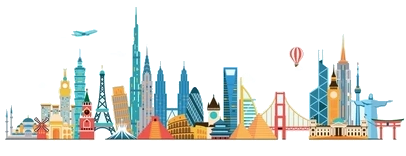 International cities
International cities
 *European Capital of Culture
*European Capital of Culture

 Medieval cities in Europe
Medieval cities in Europe
 Olympic Summer Games
Olympic Summer Games

 2024 Summer Olympics
2024 Summer Olympics
 Silk road
Silk road
 Seine
Seine

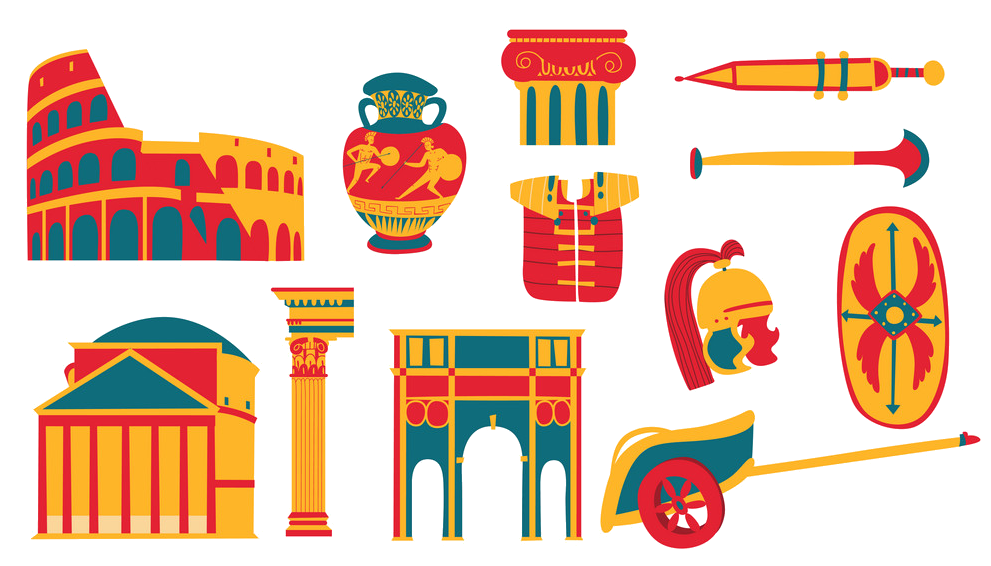 Cities founded by the Romans
Cities founded by the Romans

Paris (französisch [paˈʁi]) ist die Hauptstadt der Französischen Republik und Hauptort der Region Île-de-France. Der Fluss Seine teilt die Stadt in einen nördlichen (Rive Droite, „rechtes Ufer“) und einen südlichen Teil (Rive Gauche, „linkes Ufer“); administrativ ist sie in 20 Stadtbezirke (Arrondissements) unterteilt. Mit mehr als 2,2 Millionen Einwohnern ist Paris die fünftgrößte Stadt der Europäischen Union sowie mit über 12,5 Millionen Menschen nach London die zweitgrößte Metropolregion der EU.[1][2][3][4] Mit einer vergleichsweise kleinen Stadtfläche von nur 105 Quadratkilometern ist Paris mit rund 21.000 Einwohnern pro Quadratkilometer die am dichtesten besiedelte Großstadt Europas.
Paris ist das überragende politische, wirtschaftliche sowie kulturelle Zentrum des zentralistisch organisierten Frankreichs und mit drei Flughäfen und sechs Kopfbahnhöfen dessen größter Verkehrsknotenpunkt. Teile des Seine-Ufers zählen heute zum UNESCO-Welterbe. Die Stadt ist Sitz der UNESCO und darüber hinaus der OECD und der ICC. Sehenswürdigkeiten wie der Eiffelturm, die Kathedrale Notre-Dame oder der Louvre machen die Stadt zu einem beliebten Touristenziel. Mit rund 16 Millionen ausländischen Touristen pro Jahr ist die Stadt hinter London und Bangkok eine der meistbesuchten Städte weltweit.[5] Der Großraum Paris (Île-de-France) verzeichnet jährlich über 47 Millionen Gäste aus dem In- und Ausland und mehr als 184 Millionen Übernachtungen.[6]
Das heutige Paris entwickelte sich seit dem 3. Jahrhundert aus der keltischen Siedlung „Lutetia“ auf der Île de la Cité. Später errichteten die Römer an der Seine eine Stadt, die im 6. Jahrhundert zunächst eine Hauptresidenz des Fränkischen Reiches wurde. Eine Blütezeit der Kunst und Kultur erlebte Paris im 16. Jahrhundert unter Franz I. Durch den Absolutismus, insbesondere unter Ludwig XIV. im 17. Jahrhundert, wurde die Stadt um zahlreiche barocke Gebäude und Prachtstraßen bereichert und so zu einem beispielhaften Muster für barocken Städtebau. Obwohl die Königsresidenz 1682 nach Versailles verlegt wurde, blieb sie aufgrund ihrer politischen und wirtschaftlichen Bedeutung das Zentrum des Landes. In der Französischen Revolution kam ihr ab 1789 eine welthistorische Bedeutung zu. Die Industrialisierung führte im 19. Jahrhundert zu einem enormen Bevölkerungszuwachs, sodass 1846 erstmals die Grenze von einer Million Einwohnern überschritten wurde. In den folgenden Jahrzehnten bekam die Stadt durch die sogenannte Belle Époque und sechs Weltausstellungen weltweite Beachtung. Heute ist sie Hauptort der französischsprachigen und eine der wichtigsten Städte der westlichen Welt.
巴黎市(法语:Paris)是法国的首都和最大城市,也是法国的政治与文化中心。其隶属法兰西岛大区之下的巴黎省(编号第75省;仅辖有1个同名的省区与市镇),也是法兰西岛大区的核心。目前所谓的巴黎市辖区范围大至仅为旧巴黎城墙内(环城道路内侧),并未包含巴黎扩张发展的大巴黎实际都市区域,巴黎市辖区内依照发展历史共分成20个区,,自从1860年代开始就没有重大变化。截至2009年为止,巴黎市内人口超过223万[1] ,巴黎都会区的人口逾1,200万[2] ,是欧洲最大的都会区之一[3]。
巴黎在将近1,000年的时间中是西方世界最大的城市,也曾经是世界上最大的城市(16世纪至19世纪之间)[4][5][6]。目前是世界上最重要的政治与文化中心之一,对于教育、娱乐、时尚、科学、媒体、艺术与政治等方面皆有重大影响力,被认为是世界上最重要的全球城市之一[7][8][9][10] ,一般普世观念上与日本东京、美国纽约、英国伦敦并列世界四大国际级都市。许多国际组织都将总部设立在巴黎,例如联合国教育、科学及文化组织、经济合作与发展组织、国际商会或巴黎俱乐部等。巴黎也是欧洲绿化最深[11] 与最适合人类居住的城市之一[12] ,也是世界上生活费用最高的城市之一[13][14]。
巴黎与法兰西岛大区大约贡献法国4分之1的国内生产总值,在2009年为5,521亿欧元[15] 。根据估计,巴黎是欧洲第一[16] 或第二大城市经济体,也是世界上第六大城市经济体[17]〈按购买力平价PPP调整〉。总共有33间财富世界500强企业的总部设立在巴黎都会区[18],是欧洲最集中的地区。巴黎市辖区范围外的商业区拉德芳斯是欧洲最大的中央商务办公区[19]。巴黎的高等教育机构是欧盟最集中的地区[20],高等教育研究与发展支出也是欧洲最高的地区。巴黎也被认为是世界上最适合研发创新的城市之一[21]。每年有4,200万人造访巴黎与邻近都会区,也让巴黎成为世界上最多观光客造访的城市[20]。巴黎与与邻近都会区总共有3,800个法国国家遗产与4个世界遗产[20]。巴黎也是1989年的欧洲文化之城。
パリ(仏: Paris[1]、巴里)は、フランス北部、イル=ド=フランス地域圏にある都市。フランスの首都であり、イル=ド=フランス地域圏の首府である。
フランス最大の都市であり、同国の政治、経済、文化などの中心である。ロンドン、ニューヨーク、香港、東京などと並ぶ世界トップクラスの世界都市でもある。行政上では、1コミューン単独で県を構成する特別市であり、ルーヴル美術館を含む1区を中心に、時計回りに20の行政区が並ぶ(エスカルゴと形容される[2])。
市域はティエールの城壁跡に造られた環状高速道路の内側の市街地(面積は86.99km2。参考:東京都・山手線の内側は63km2、ニューヨーク市・マンハッタンは59km2)、および、その外側西部のブローニュの森と外側東部のヴァンセンヌの森を併せた形となっており、面積は105.40 km2。ケスタ地形を呈するパリ盆地のほぼ中央に位置し、市内をセーヌ川が貫く。この川の中州であるシテ島を中心に発達した。市内の地形は比較的平坦であるが、標高は最低でセーヌ川沿いの35メートル、最高でモンマルトルの丘の130メートルである[3]。北緯49度とやや高緯度に位置するが、温かい北大西洋海流と偏西風によって一年を通して比較的温暖となっており、西岸海洋性気候の代表的な都市である。
世界有数の大都市であり、アメリカのシンクタンクが2017年に発表した総合的な世界都市ランキングにおいて、ロンドン、ニューヨークに次ぐ世界3位の都市と評価された[4]。日本の民間シンクタンクによる2017年発表の「世界の都市総合力ランキング」(森記念財団都市戦略研究所、森ビル)では、ロンドン、ニューヨーク、東京に次ぐ世界4位の都市と評価された[5]。フランス経済の中心地で、世界屈指の経済都市であり、多国籍企業の本社数や資本市場の規模などビジネス分野を総合評価した都市ランキングでは、ロンドンと共にヨーロッパでトップクラスであり、世界500大企業の本社数では、ニューヨークやロンドンを凌ぎ、西洋の都市では最多である。2014年のアメリカのダウ・ジョーンズらの調査によると、世界7位の金融センターと評価されており、欧州ではロンドンに次ぐ2位である[6]。
パリは年間外国人観光客数が世界一の観光都市である。歴史的な建物を観ることができ、ルーヴル美術館、ポンピドゥーセンターなどを始めとした一流の美術館で厖大な数の一流の美術品を観賞できる。また世界最古のバレエ団や、世界で最も古くから存在している劇団などの公演を楽しむこともできる。
パリ出身者・居住者は男性がパリジャン(仏: Parisien、フランス語発音: [parizjɛ̃] パリズィヤン)、女性がパリジェンヌ(仏: Parisienne、フランス語発音: [parizjɛn] パリズィエンヌ)と呼ばれる。1960年代以降、旧植民地であったアフリカ中部・北部やインドシナ半島、更に近年は中近東や東欧、中国などからの移民も増え、パリジャン・パリジェンヌも多民族・多人種化している。
市域人口は1950年代の約290万人を絶頂に減少し続けたが、ここ数年は微増傾向に転じており、2011年現在で約225万人である(INSEEによる)。2011年の近郊を含む都市的地域の人口では1,200万人を超えており、ロンドンを凌ぐEU最大の都市部を形成している[7]。
Paris (French pronunciation: [paʁi] ( listen)) is the capital and most populous city of France, with an area of 105 square kilometres (41 square miles) and a population of 2,206,488.[5][6] Since the 17th century, Paris has been one of Europe's major centres of finance, commerce, fashion, science, music, and painting. The Paris Region had a GDP of €681 billion (US$850 billion) in 2016, accounting for 31 per cent of the GDP of France.[7] In 2013–2014, the Paris Region had the third-highest GDP in the world and the largest regional GDP in the EU. According to the Economist Intelligence Unit Worldwide Cost of Living Survey in 2018, Paris was the second-most expensive city in the world, behind Singapore and ahead of Zurich, Hong Kong, Oslo and Geneva.[8]
listen)) is the capital and most populous city of France, with an area of 105 square kilometres (41 square miles) and a population of 2,206,488.[5][6] Since the 17th century, Paris has been one of Europe's major centres of finance, commerce, fashion, science, music, and painting. The Paris Region had a GDP of €681 billion (US$850 billion) in 2016, accounting for 31 per cent of the GDP of France.[7] In 2013–2014, the Paris Region had the third-highest GDP in the world and the largest regional GDP in the EU. According to the Economist Intelligence Unit Worldwide Cost of Living Survey in 2018, Paris was the second-most expensive city in the world, behind Singapore and ahead of Zurich, Hong Kong, Oslo and Geneva.[8]
The City of Paris's administrative limits form an East-West oval centred on the island at its historical heart, the Île de la Cité; this island is near the top of an arc of the river Seine that divides the city into southern Rive Gauche (Left Bank) and northern Rive Droite regions. Paris is the core of a built-up area that extends well beyond its limits: commonly referred to as the agglomération Parisienne, and statistically as a unité urbaine (a measure of urban area), the Paris agglomeration's 2013 population of 10,601,122 made it the largest urban area in the European Union.[3][not in citation given] City-influenced commuter activity reaches well beyond even this in a statistical aire urbaine de Paris (a measure of metropolitan area), that had a 2013 population of 12,405,426,[9] a number one-fifth the population of France,[10] the largest metropolitan area in the Eurozone.
The city is a major rail, highway, and air-transport hub served by two international airports: Paris-Charles de Gaulle (the second busiest airport in Europe after London Heathrow Airport with 69.5 million passengers in 2017) and Paris-Orly.[11][12] Opened in 1900, the city's subway system, the Paris Métro, serves 5.23 million passengers daily,[13] and is the second busiest metro system in Europe after Moscow Metro. Paris's Gare du Nord is one of the ten busiest railway stations in the world, with 262 million passengers in 2015.[14]
Paris is especially known for its museums and architectural landmarks: the Louvre was the most visited art museum in the world in 2017, with 8.1 million visitors.[15][16] The Musée d'Orsay and Musée de l'Orangerie are noted for their collections of French Impressionist art, and the Pompidou Centre Musée National d'Art Moderne has the largest collection of modern and contemporary art in Europe. The historical district along the Seine in the city centre is classified as a UNESCO Heritage Site. Popular landmarks in the centre of the city include the Cathedral of Notre Dame de Paris and the Gothic royal chapel of Sainte-Chapelle, both on the Île de la Cité; the Eiffel Tower, constructed for the Paris Universal Exposition of 1889; the Grand Palais and Petit Palais, built for the Paris Universal Exposition of 1900; the Arc de Triomphe on the Champs-Élysées, and the Basilica of Sacré-Coeur on the hill of Montmartre. Paris received 23 million visitors in 2017, measured by hotel stays, with the largest numbers of foreign visitors coming from the United States, the UK, Germany and China.[17][18] It was ranked as the third most visited travel destination in the world in 2017, after Bangkok and London.[19]
The football club Paris Saint-Germain and the rugby union club Stade Français are based in Paris. The 80,000-seat Stade de France, built for the 1998 FIFA World Cup, is located just north of Paris in the neighbouring commune of Saint-Denis. Paris hosts the annual French Open Grand Slam tennis tournament on the red clay of Roland Garros. Paris hosted the Olympic Games in 1900, 1924 and will host the 2024 Summer Olympics. The 1938 and 1998 FIFA World Cups, the 2007 Rugby World Cup, and the 1960, 1984, and 2016 UEFA European Championships were also held in the city and, every July, the Tour de France bicycle race finishes there.
Paris (prononcé [pa.ʁi] Écouter) est la capitale de la France. Elle se situe au cœur d'un vaste bassin sédimentaire aux sols fertiles et au climat tempéré, le bassin parisien, sur une boucle de la Seine, entre les confluents de celle-ci avec la Marne et l'Oise. Ses habitants s’appellent les Parisiens. Paris est également le chef-lieu de la région Île-de-France et l'unique commune française qui est en même temps un département. Commune centrale de la métropole du Grand Paris, créée en 2016, elle est divisée en arrondissements, comme les villes de Lyon et de Marseille, au nombre de vingt. L’État y dispose de prérogatives particulières exercées par le préfet de police de Paris.
Ville la plus peuplée de France, elle est quatrième parmi les aires urbaines européennes derrière Moscou, Istanbul et Londres et la 29e plus peuplée du monde. Paris compte 2,21 millions d'habitants au 1er janvier 2015. L'agglomération parisienne s’est largement développée au cours du XXe siècle, rassemblant 10,71 millions d'habitants au 1er janvier 2015, et son aire urbaine (l'agglomération et la couronne périurbaine) comptait 12,53 millions d'habitants.
La position de Lutèce, sur une île permettant le franchissement du grand fleuve navigable qu'est la Seine par une voie reliant le Nord et le Sud des Gaules, en fait dès l'Antiquité une cité importante, capitale des Parisii, puis lieu de séjour d'un empereur romain. Sa position au centre du territoire contrôlé par les rois Francs la fait choisir comme capitale de la France à la place de Tournai. Située au cœur d'un territoire agricole fertile avec un climat humide et doux, Paris devient une des principales villes de France au cours du Xe siècle, avec des palais royaux, de riches abbayes et une cathédrale ; au cours du XIIe siècle, avec l'Université de Paris, la cité devient un des premiers foyers en Europe pour l’enseignement et les arts. Le pouvoir royal se fixant dans cette ville, son importance économique et politique ne cesse de croître. Ainsi, au début du XIVe siècle, Paris est l'une des villes les plus importantes du monde chrétien. Au XVIIe siècle, elle est la capitale de la principale puissance politique européenne, au XVIIIe siècle l'un des plus grands centres culturels de l’Europe et au XIXe siècle la capitale des arts et des plaisirs. Paris joue donc un rôle culturel, politique et économique majeur dans l’histoire de l'Europe et du monde occidental au cours du IIe millénaire.
Symbole de la culture française, abritant de nombreux monuments, la ville, surnommée la Ville Lumière, attire en 2017 près de 34 millions de visiteurs ce qui en fait une des capitales les plus visitées au monde. Paris occupe également une place prépondérante dans le monde dans le milieu de la mode, du luxe et de la haute gastronomie. La capitale française n'est jumelée qu'avec une seule autre ville, Rome, ce qui est valable dans l'autre sens, avec ce slogan : « Seul Paris est digne de Rome, seule Rome est digne de Paris ». Paris sera, par ailleurs, en 2024 la deuxième ville avec Londres à avoir accueilli trois fois les Jeux olympiques après ceux de 1900 et ceux de 1924.
La ville est, avec sa banlieue, la capitale économique et commerciale de la France, ainsi que sa première place financière et boursière. Elle accueillera en 2019 l'Autorité bancaire européenne. La région parisienne, avec un produit intérieur brut (PIB) de 649 milliards d'euros en 2014, est un acteur économique européen majeur et la première région européenne par le PIB régional, devant la Rhénanie du Nord-Westphalie (627 milliards d'euros) et le Grand Londres (509 milliards d'euros). Elle est également l'une des régions les plus riches d'Europe avec un PIB par habitant de 52 900 euros en 2014. Paris est le siège de plusieurs organisations internationales comme l'UNESCO ou l'OCDE.
La densité de ses réseaux ferroviaire, autoroutier et de ses structures aéroportuaires en font un point de convergence pour les transports nationaux et internationaux. Cette situation résulte d’une longue évolution, en particulier des conceptions centralisatrices des monarchies et des républiques, qui donnent un rôle considérable à la capitale dans le pays et tendent à y concentrer les institutions. Depuis les années 1960, les politiques gouvernementales oscillent toutefois entre déconcentration et décentralisation. La macrocéphalie dont est atteinte la ville se concrétise par la convergence de la plupart des réseaux routiers et ferroviaires du pays en son centre et des écarts démographiques et économiques disproportionnés entre la capitale et la province : près de 19 % de la population française vit dans l'aire urbaine de Paris.
París (en francés Paris, pronunciado  [paʁi] (?·i)) es la capital de Francia y su ciudad más poblada. Capital de la región de Isla de Francia (o "Región Parisina"), es constituida en la única comuna unidepartamental del país. Está situada a ambos márgenes de un largo meandro del río Sena, en el centro de la cuenca parisina, entre la confluencia del río Marne y el Sena, aguas arriba, y el Oise y el Sena, aguas abajo.
[paʁi] (?·i)) es la capital de Francia y su ciudad más poblada. Capital de la región de Isla de Francia (o "Región Parisina"), es constituida en la única comuna unidepartamental del país. Está situada a ambos márgenes de un largo meandro del río Sena, en el centro de la cuenca parisina, entre la confluencia del río Marne y el Sena, aguas arriba, y el Oise y el Sena, aguas abajo.
La ciudad de París, dentro de sus estrechos límites administrativos, tiene una población de 2 273 305 habitantes en 2015.2 Sin embargo, en el siglo XX, el área metropolitana de París se expandió más allá de los límites del municipio de París, y es hoy en día, con una población de 12 405 426 habitantes en 2013, la segunda área metropolitana del continente europeo (después de Londres) y la 28ª del mundo.4
La región de París es junto con la de Londres, uno de los núcleos económicos más importantes de Europa.6 Con 607 000 millones de euros (845 000 millones de dólares), produjo más de una cuarta parte del producto interior bruto (PIB) de Francia en 2011.7 La Défense es el principal barrio de negocios de Europa,8 alberga la sede social de casi la mitad de las grandes empresas francesas, así como la sede de veinte de las 100 más grandes del mundo.
Durante el siglo XIX y XX junto con la ciudad de Londres, 9 París fue el centro de desarrollo de proyectos arquitectónicos dentro del marco de la Revolución Industrial y sus famosas exposiciones. Ejemplos de ello son: el Mercado de la Madeleine, en 1824; las Grandes Halles iniciadas en 1853 , las Galerie des Machines y la Torre Eiffel ambas realizadas en la exposición de París de 1889.
Es conocida también como la «Ciudad Luz» (la Ville lumière), es el destino turístico más popular del mundo, con más de 42 millones de visitantes extranjeros por año.10 Cuenta con muchos de los monumentos más famosos y admirados del orbe: la Torre Eiffel, la Catedral de Notre Dame, la avenida de los Campos Elíseos, el Arco de Triunfo, la Basílica del Sacré Cœur, el Palacio de Los Inválidos, el Pante&


Bern 
![]() [bɛrn] (französisch Berne [bɛʁn], italienisch Berna [ˈbɛrna], rätoromanisch
[bɛrn] (französisch Berne [bɛʁn], italienisch Berna [ˈbɛrna], rätoromanisch  Berna?/i, berndeutsch Bärn [b̥æːrn]) ist eine politische Gemeinde in der Schweiz und als Bundesstadt de facto deren Hauptstadt (siehe auch Hauptstadtfrage der Schweiz). Bern ist Hauptort des gleichnamigen Kantons und liegt im Verwaltungskreis Bern-Mittelland dieses Kantons. Die Stadt ist nicht nur Sitz der städtischen und kantonalen, sondern als Bundesstadt auch der eidgenössischen Verwaltung und damit das grösste Verwaltungszentrum der Schweiz.
Berna?/i, berndeutsch Bärn [b̥æːrn]) ist eine politische Gemeinde in der Schweiz und als Bundesstadt de facto deren Hauptstadt (siehe auch Hauptstadtfrage der Schweiz). Bern ist Hauptort des gleichnamigen Kantons und liegt im Verwaltungskreis Bern-Mittelland dieses Kantons. Die Stadt ist nicht nur Sitz der städtischen und kantonalen, sondern als Bundesstadt auch der eidgenössischen Verwaltung und damit das grösste Verwaltungszentrum der Schweiz.
Die 1191 gegründete Zähringerstadt ist mit ihren charakteristischen Lauben teilweise in ihrer ursprünglichen Form erhalten. Seit 1218 Freie Reichsstadt, trat Bern 1353 der Eidgenossenschaft bei und entwickelte sich bis ins 16. Jahrhundert zum grössten Stadtstaat nördlich der Alpen. 1983 wurde die Berner Altstadt in die Liste des UNESCO-Welterbes aufgenommen.[6]
Die Stadt Bern verfügt über eine Gesamtbevölkerung von 134'794 Einwohnern (Stand 31. Dezember 2020). Nach Zürich, Genf, Basel und Lausanne sowie vor Winterthur gehört sie zu den einwohnerreichsten Gemeinden der Schweiz. In der Agglomeration Bern, zu der 70 Gemeinden gehören, beträgt die ständige Wohnbevölkerung 419'983 Personen (Stand: 2018).[7][8]
Seit Jahren wird Bern mit Zürich und Genf als eine der Städte mit den weltweit höchsten Lebenshaltungskosten gelistet.[9][10]
Die Stadt Bern ist Zentrum der Verwaltungsregion Bern-Mittelland und der Regionalkonferenz Bern-Mittelland mit seiner Teilkonferenz Wirtschaftsraum Bern. Seit längerem bestehen ausserdem Bestrebungen, die Stadt und die Agglomeration als Hauptstadtregion Schweiz noch deutlicher zu positionieren. Mitglieder dort sind die Kantone Bern, Freiburg, Wallis, Neuenburg und Solothurn sowie Städte, Gemeinden und Regionalorganisationen.
伯恩(德语:Bern,[bɛrn] (ⓘ);阿勒曼尼语:Bärn,[b̥æːrn];法语:Berne,[bɛʁn] (ⓘ);义大利语:Berna,[ˈbɛrna];罗曼什语:Berna,[ˈbɛrnɐ] (ⓘ))位于瑞士西半部领土中央偏北之处,为仅次于苏黎世、日内瓦、巴塞尔和洛桑的第五大城,德语区第三大城市,是伯恩州首府,亦是瑞士事实上的中央政府所在地。其旧城区今日已成为联合国教科文组织核定的世界遗产。
伯尔尼(Berne)是瑞士的首都,伯尔尼州首府,位于瑞士高原中央山地,莱茵河支流阿勒河在这里流成一个回环。联邦政府与议会设在此处,各国大使馆及一些国际机构聚集于此。伯 尔尼旧城就建在河曲半岛上,现已扩大到河的两岸,有7座桥梁把两岸旧城区与东岸新城区连接起来。伯尔尼现有人口 15万。气候温和湿润,冬暖夏凉。
伯尔尼更多程度上只能被称为是一座“玲珑的城市”,而不像其他许多国家的首都那样气势辉煌、规模庞大。作为中立国的瑞士处处让人感受到静谧和安详,而伯尔尼则是这种静谧的最佳体现。精 简的结构反映出纯朴的精神,温暖的乡村气息中萦绕着挥之不去的贵族化的高雅韵味,可以说伯尔尼是世界上最美丽的国都,整个城市就是一件玲珑的艺术品。经过了历代巧匠精心制作,那些堂皇的建筑物(中古式、哥德式、巴 罗克式)都神妙的彼此依托,恍若一体,非其他任何地方所能企及。
伯尔尼还是瑞士传统钟表业的中心,许多世界名品都诞生于此,这里是欧洲最大的具有中世纪特色的购物区。
伯尔尼历史
伯尔尼于公元1191年建城,1848年成为瑞士首都。初建伯尔尼的时候,统治者贝尔托德公爵(Berthodv)突发奇想,决定出城去打猎用猎获的第一只野兽作为城名。结果他首先打到了一头熊,从 此伯尔尼的州徽、市徽皆以熊为图案,因而伯尔尼至今仍被称为“熊之城”。它具有中世纪风貌,旧城建筑古朴,街道狭窄。高耸的塔楼、带有走廊的商店和街心竖立的彩色石刻喷泉等都吸引着游客。这座保护完好的古城,已 被联合国教科文组织列为世界文化遗产。(Quelle: trip.sotrip.com)

 Architecture
Architecture

 History
History

 International cities
International cities
 *European Capital of Culture
*European Capital of Culture

 Medieval cities in Europe
Medieval cities in Europe
 Vltava
Vltava
 Silk road
Silk road
 Czech Republic
Czech Republic

 World Heritage
World Heritage



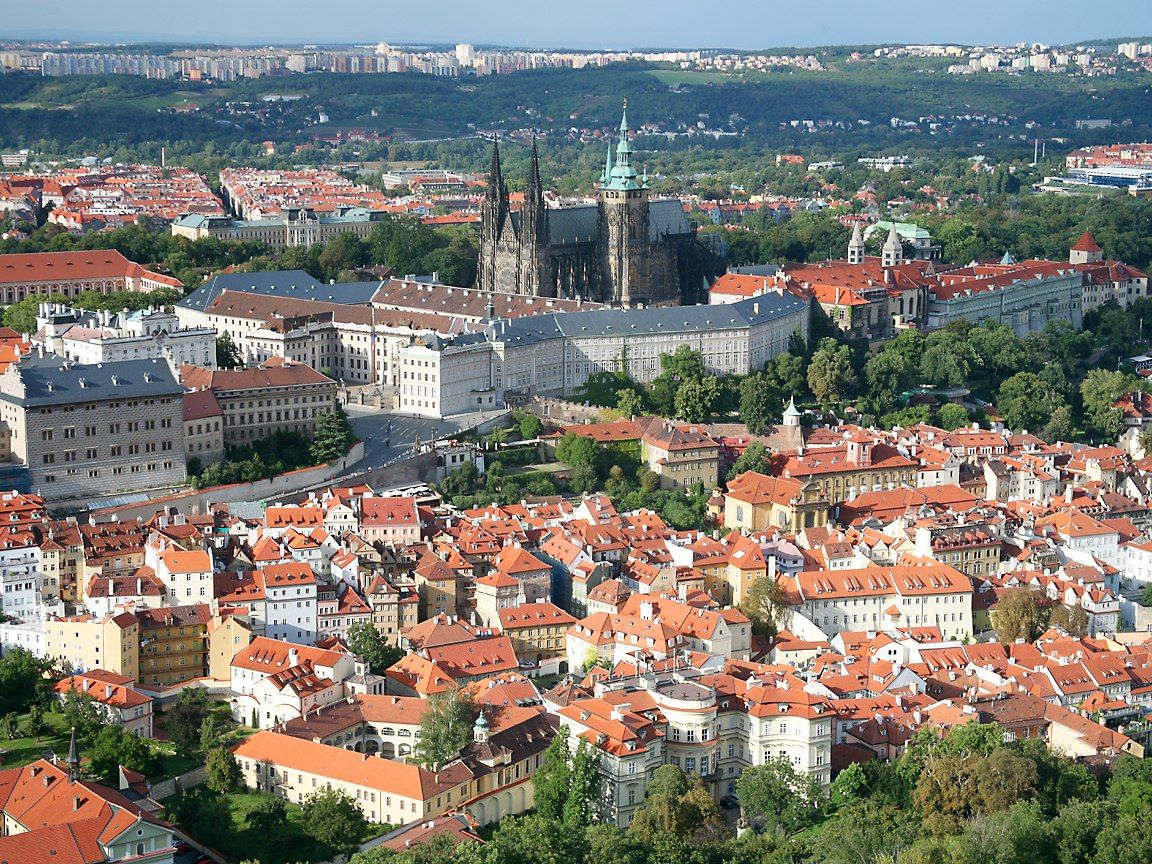
Prag (tschechisch Praha [ˈpraɦa];  Aussprache?/i) ist die Hauptstadt und zugleich bevölkerungsreichste Stadt der Tschechischen Republik. Mit über 1,2 Millionen Einwohnern belegt Prag den vierzehnten Rang der größten Städte der Europäischen Union. Die Hauptstadt Prag ist eine der 14 Regionen Tschechiens und eine der reichsten Regionen Europas[2].
Aussprache?/i) ist die Hauptstadt und zugleich bevölkerungsreichste Stadt der Tschechischen Republik. Mit über 1,2 Millionen Einwohnern belegt Prag den vierzehnten Rang der größten Städte der Europäischen Union. Die Hauptstadt Prag ist eine der 14 Regionen Tschechiens und eine der reichsten Regionen Europas[2].
Prag ist die historische Hauptstadt Böhmens und war eine bedeutende königliche und kaiserliche Residenzstadt im Heiligen Römischen Reich, besonders unter den Přemysliden, Luxemburgern und Habsburgern. Um 1230 wurde die seit der Frühgeschichte bewohnte Siedlung zu einer königlichen Stadt erhoben und im 14. Jahrhundert als Residenzstadt Karls IV. zu einem politisch-kulturellen Zentrum in Europa. Mit der Karls-Universität wurde in Prag 1348 die erste Universität in Mitteleuropa gegründet. Auch das Konservatorium und die Technische Universität gehören zu den ältesten ihrer Art in Europa. Über Jahrhunderte hinweg war Prag eine Stadt, in der sich tschechische, deutsche und jüdische Kultur begegneten.
Das historische Zentrum Prags ist von der UNESCO als eine der 12 Welterbestätten Tschechiens anerkannt. Die „Goldene Stadt“ zeigt heute ein geschlossenes, von Gotik und Barock geprägtes Stadtbild. Sehenswürdigkeiten wie die Prager Burg, die Karlsbrücke, die mittelalterliche Rathausuhr, der jüdische Friedhof oder die älteste aktive Synagoge der Welt machen die Stadt zu einem beliebten touristischen Ziel. Mit mehr als fünf Millionen ausländischen Touristen im Jahr zählt Prag zu den zehn meistbesuchten Städten Europas.
布拉格(Prague),位于捷克国境西部,座落在拉贝河支流伏尔塔瓦河两岸,人口121万,是一座美丽而古老的山城。伏尔塔瓦河像一条绿色的玉带,将城 市分为两部分,沿河两岸陡立的山壁,渐渐消失在远方起伏的原野里。横跨在河上的10几座古老的和现代化的大桥,雄伟壮观,将城市两部分协调巧妙地联为一 体。耸立在市区的伯特日娜山,乔木葱郁,风景秀丽,是一处环境幽雅的休息之地。
布拉格市区那些带有尖塔或圆顶的塔式古老建筑物,无论是罗马式、哥德式、巴罗克式,还是文艺复兴式,都完好地保存着,其中以哥德式或巴罗克式数量最多、最 为著名,它们大多是教堂。高高低低的塔尖,毗连成一片塔林,因而布拉格有“百塔之城”之称。在阳光照耀下,“百塔”显得金碧辉煌,因而又被称为“金色的布拉格”。(Quelle:http://www.ghl.com.cn)
布拉格(捷克语:Praha,德语:Prag)是捷克首都和最大城市、欧盟第十四大城市,[2]和历史上波西米亚的首都,位于该国的中波希米亚州、伏尔塔瓦河流域。该市地处欧洲大陆的中心,在交通上一向拥有重要地位,与周边国家的联系也相当密切(特别是在地理上恰好介于柏林与维也纳这2个德语国家的首都中间)。布拉格是一座欧洲历史名城。城堡始建于公元9世纪。1345—1378年,在查理四世统治时期,布拉格成为神圣罗马帝国兼波希米亚王国的首都,而达到鼎盛时期,并兴建了中欧、北欧和东欧第一所大学——查理大学。15世纪和17世纪,在布拉格先后由于宗教原因发生2次将人扔出窗外的事件,分别引发了胡斯战争和影响深远的欧洲三十年战争(1618年-1648年)。工业革命以后到第二次世界大战以前,布拉格属于欧洲工业较发达的城市之一,在奥匈帝国拥有举足轻重的地位。当时布拉格也曾是一个多民族混居的城市,多元文化是其显著特色,不过经过两次世界大战之后,布拉格已经基本上成为单一捷克民族的城市。布拉格是一座著名的旅游城市,市内拥有为数众多的各个历史时期、各种风格的建筑,从罗马式、哥特式建筑、文艺复兴、巴洛克、洛可可、新古典主义、新艺术运动风格到立体派和超现代主义,其中特别以巴洛克风格和哥特式建筑更占优势。布拉格建筑给人整体上的观感是建筑顶部变化特别丰富,并且色彩极为绚丽夺目(红瓦黄墙),因而拥有“千塔之城”、“金色城市”等美称,号称欧洲最美丽的城市之一。1992年,布拉格历史中心列入联合国教科文组织的世界文化遗产名单,每年,有4.4万旅客慕名而来,是欧洲第六受欢迎来旅游的城市[3][4][5]2013年,布拉格入选世界首座“世界文化遗产”城市。 布拉格也是欧洲的文化重镇之一,历史上曾有音乐、文学等诸多领域众多杰出人物,如作曲家沃尔夫冈·莫扎特、贝多伊奇·斯美塔那、安东尼·德沃夏克,作家弗兰兹·卡夫卡、瓦茨拉夫·哈维尔、米兰·昆德拉等人在该城进行创作活动,今天该市仍保持了浓郁的文化气氛,拥有众多的歌剧院、音乐厅、博物馆、美术馆、图书馆、电影院等文化机构,以及层出不穷的年度文化活动。
Prague (/prɑːɡ/; Czech: Praha [ˈpraɦa] ( listen), German: Prag) is the capital and largest city in the Czech Republic, the 14th largest city in the European Union[9] and the historical capital of Bohemia. Situated in the north-west of the country on the Vltava river, the city is home to about 1.3 million people, while its larger urban zone is estimated to have a population of 2.6 million.[10] The city has a temperate climate, with warm summers and chilly winters.
listen), German: Prag) is the capital and largest city in the Czech Republic, the 14th largest city in the European Union[9] and the historical capital of Bohemia. Situated in the north-west of the country on the Vltava river, the city is home to about 1.3 million people, while its larger urban zone is estimated to have a population of 2.6 million.[10] The city has a temperate climate, with warm summers and chilly winters.
Prague has been a political, cultural and economic centre of central Europe complete with a rich history. Founded during the Romanesque and flourishing by the Gothic, Renaissance and Baroque eras, Prague was the capital of the kingdom of Bohemia and the main residence of several Holy Roman Emperors, most notably of Charles IV (r. 1346–1378).[11] It was an important city to the Habsburg Monarchy and its Austro-Hungarian Empire. The city played major roles in the Bohemian and Protestant Reformation, the Thirty Years' War and in 20th-century history as the capital of Czechoslovakia, during both World Wars and the post-war Communist era.[12]
Prague is home to a number of famous cultural attractions, many of which survived the violence and destruction of 20th-century Europe. Main attractions include the Prague Castle, the Charles Bridge, Old Town Square with the Prague astronomical clock, the Jewish Quarter, Petřín hill and Vyšehrad. Since 1992, the extensive historic centre of Prague has been included in the UNESCO list of World Heritage Sites.
The city has more than ten major museums, along with numerous theatres, galleries, cinemas and other historical exhibits. An extensive modern public transportation system connects the city. Also, it is home to a wide range of public and private schools, including Charles University in Prague, the oldest university in Central Europe.[13]
Prague is classified as a "Beta+" global city according to GaWC studies[14] and ranked sixth in the Tripadvisor world list of best destinations in 2016.[15] Its rich history makes it a popular tourist destination and as of 2014, the city receives more than 6.4 million international visitors annually. Prague is the fifth most visited European city after London, Paris, Istanbul and Rome.[16]
Prague (prononcé [pʁag] ; en tchèque Praha [ˈpra.ɦa]) est la capitale et la plus grande ville de la République tchèque. Elle est à la fois l’une des quatorze régions du pays, le chef-lieu de la région administrative de Bohême-Centrale2,3 et la capitale de la région historique de Bohême. Elle est traversée par la Vltava (Moldau en allemand) et compte 1 280 508 habitants en 20164.
Prague est située en plein cœur de l'Europe centrale. Elle fut par le passé capitale du royaume de Bohême, du Saint-Empire romain germanique et de la Tchécoslovaquie (ČSR, ČSSR et enfin ČSFR). La ville aux mille tours et mille clochers (qui est encore la caractéristique architecturale de la ville) a miraculeusement échappé aux destructions de la Seconde Guerre mondiale et offre une architecture mêlant les styles préroman, roman, gothique, baroque, rococo, Art nouveau et cubiste. En 1968, le Printemps de Prague et l'écrasement du « socialisme à visage humain » par les troupes de l'URSS et du Pacte de Varsovie ont profondément marqué les Praguois et inspiré la culture des années 1960-1980. Depuis 1992, le centre ville historique est inscrit sur la liste du patrimoine mondial par l'UNESCO.
Prague est la sixième région urbaine la plus riche de l'Union européenne en termes de PIB par habitant PPA5, derrière la région urbaine de Hambourg mais devant l'Île-de-France6, la progression est continue ces dernières années. En 2015, selon Eurostat, le chômage était de 2,8 % dans la région de Prague7. Le contexte économique national est également plutôt favorable car la République tchèque est, avec les Pays-Bas, le pays où le taux de pauvreté est le plus bas d'Europe : il s'établit à 10 % de la population8, contre 16 % de moyenne pour l'Union européenne. Prague fait partie des villes mondiales Alpha - (villes globales) d'après le classement GaWC9 de l'université de Loughborough.
Praga (en checo, Praha  [ˈpraɦa] (?·i)) es la capital de la República Checa, tal y como recoge la Constitución del país.1 Antes fue capital del Reino de Bohemia y de Checoslovaquia. También es la capital de la región de Bohemia.
[ˈpraɦa] (?·i)) es la capital de la República Checa, tal y como recoge la Constitución del país.1 Antes fue capital del Reino de Bohemia y de Checoslovaquia. También es la capital de la región de Bohemia.
Situada a orillas del río Moldava, tiene aproximadamente 1,2 millones de habitantes, lo que la convierte en la ciudad más poblada del país y la séptima de Europa Central. El área metropolitana de Praga cuenta con una población de 1,9 millones de habitantes.2
Desde 1992 el casco histórico de la ciudad es Patrimonio de la Humanidad.34 Su belleza y patrimonio histórico la convierten en una de las veinte ciudades más visitadas del mundo.5
Praga se ha desarrollado desde el siglo IX, convirtiéndose en una de las capitales más importantes de Europa en los siglos XVIII y XIX. Sin embargo, en el siglo XX sufrió las dos guerras mundiales y, principalmente, la dictadura nazi. Tras la segunda guerra, quedó dentro de la esfera de influencia soviética. Tras la Revolución de terciopelo y la caída del Muro de Berlín la ciudad se ha ido adaptando a la economía de mercado.
Пра́га (чеш. Praha [ˈpraɦa]) — статутный город и столица Чешской Республики, административный центр Среднечешского края и двух его районов: Прага-Восток и Прага-Запад. Образует самостоятельную административно-территориальную единицу страны.
Население: 1,3 млн человек (2018 год). Четырнадцатый по величине город в Евросоюзе. Расположена на берегах реки Влтавы в сорока километрах от её впадения в Лабу.
Главный политический, экономический и культурный центр Чехии. Крупный туристический центр Европы. Количество туристов в 2012 году превысило 5,4 млн человек[3].
С X века столица Чешского государства; в 1526—1918 годы главный город Богемии под властью Габсбургов; с 1918 по 1992 год столица Чехословакии; с 1993 года — Чешской Республики. Исторический центр внесён в список Всемирного наследия ЮНЕСКО.
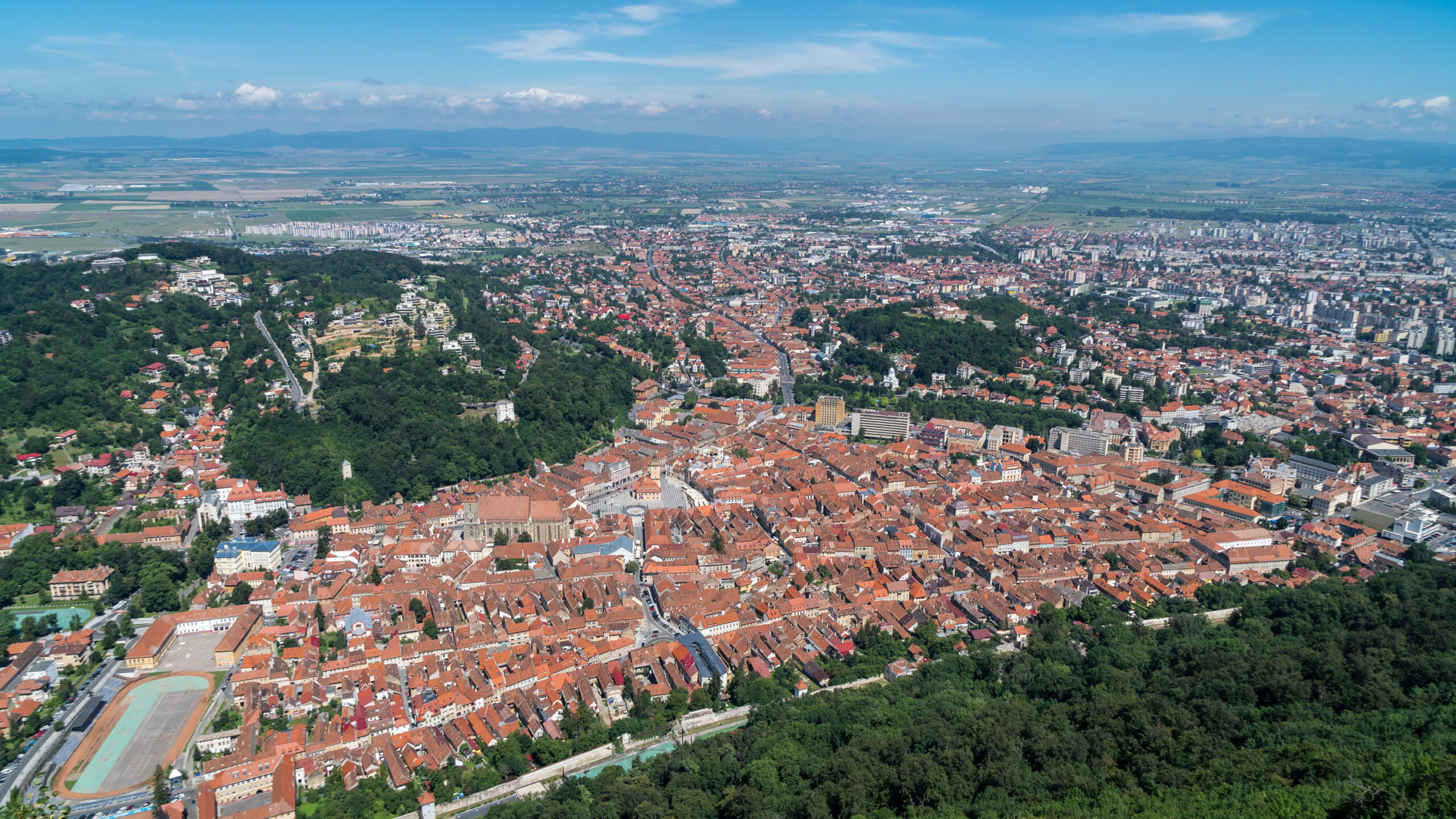
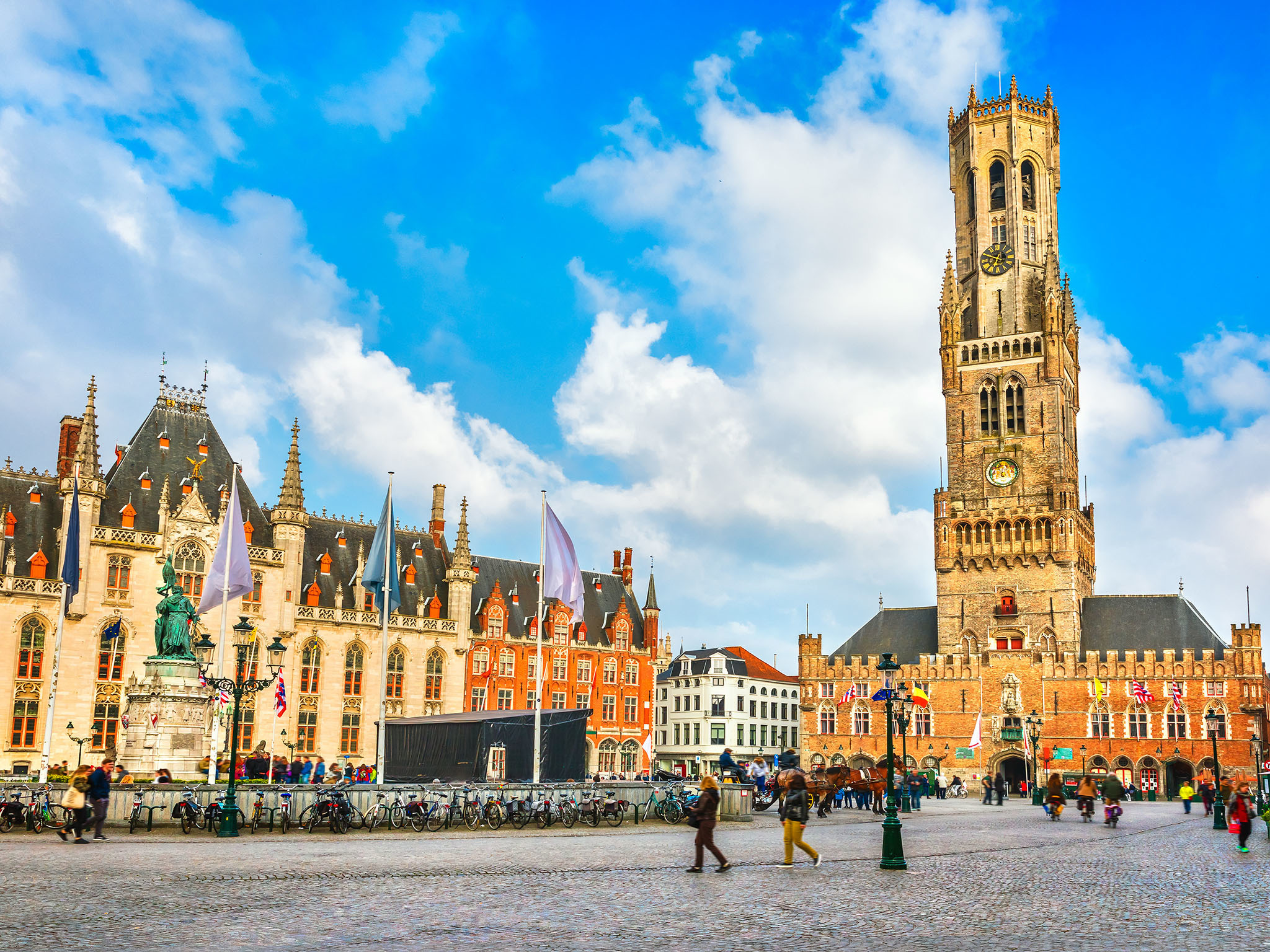
Brügge (niederländisch Brugge, französisch Bruges) ist die Hauptstadt und mit 118.284 Einwohnern (Stand 1. Januar 2018) die größte Stadt der Provinz Westflandern in Belgien. Außerdem ist Brügge Bischofssitz der katholischen Kirche für das Bistum Brügge.
Im Spätmittelalter war die niederländische Region um Brügge eines der Zentren der Textilindustrie und des Fernhandels in Europa und damit eine der Geburtsstätten des Frühkapitalismus. In der Stadt residierten zeitweise die Herzöge von Burgund, unter deren Herrschaft Brügge zu einer der wirtschaftlich und kulturell reichsten Städte im damaligen Europa wurde.
Die Altstadt ist von Wallanlagen, auf denen Windmühlen stehen, und Kanälen umgeben. Da Brügge nie durch Kriege oder großflächige Brände zerstört wurde, sind mittelalterliches Stadtbild und historische Gebäude sehr gut erhalten. Die Stadt ist sowohl zu Fuß als auch per Bootstour erkundbar. Die Kanäle, die die Stadt durchziehen, nennen die Einheimischen Reien nach dem im Mittelalter vollständig kanalisierten Flüsschen Reie, über das Brügge direkt mit der Nordsee verbunden war.
Der mittelalterliche Stadtkern wurde im Jahr 2000 von der UNESCO zum Weltkulturerbe erklärt. Im Jahr 2002 war Brügge Europäische Kulturhauptstadt.
Brügge beherbergt das renommierte Europakolleg (College of Europe) und verfügt über einen wichtigen Seehafen im Teilort Zeebrugge.
布鲁日(Bruges),位于比利时西北部,是比利时西佛兰德省省会,也是比利时著名的文化名城、旅游胜地。“布鲁日”在佛兰德语中有“桥”的意思,由流经市内的莱伊河上的一座古罗马桥梁而得名。14世纪为欧洲最大的商港之一。同时也有球队和人以此命名。布鲁日历史中心是典型的中世纪古城,保存着大量数世纪前的建筑。早期,哥特式建筑已经成为城市特色的一个部分。作为欧洲的重要贸易中心和文化中心,布鲁日和世界上其他地方有文化上的联系,比如布鲁日与佛兰芒原始绘画流派(Flemish Primitives)有着密切的关系。2000年被列入世界文化遗产。
ブルッヘまたはブリュッヘ、ブルグ、ブラヘなど(フラマン語(オランダ語):Brugge[ˈbrʏʝə] 発音例)、ブリュージュ(仏語:Bruges[ˈbʁyːʒ] 発音例)、ブルージュ(英語:Bruges[ˈbruːʒ] 発音例)は、ベルギー北西部、フランデレン地域の都市で、ウェスト=フランデレン州の州都。ベルギーの代表的な観光都市の一つであり、2002年には、スペインのサラマンカとともに欧州文化首都に選定された。
日本の百科事典や地名事典では「ブルッヘ」ないし「ブリュッヘ」が用いられることが多いが、観光業などの分野では「ブルージュ」や「ブリュージュ」も多く用いられている。なお、地名の由来は「橋」であり、市内に張り巡らされた運河に架かる無数の橋に因んでいる。
Bruges (/bruːʒ/; Dutch: Brugge [ˈbrʏɣə]; French: Bruges [bʁyːʒ]; German: Brügge) is the capital and largest city of the province of West Flanders in the Flemish Region of Belgium, in the northwest of the country.
The area of the whole city amounts to more than 13,840 hectares (138.4 sq km; 53.44 sq miles), including 1,075 hectares off the coast, at Zeebrugge (from Brugge aan zee,[2] meaning "Bruges by the Sea").[3] The historic city centre is a prominent World Heritage Site of UNESCO. It is oval in shape and about 430 hectares in size. The city's total population is 117,073 (1 January 2008),[4] of whom around 20,000 live in the city centre. The metropolitan area, including the outer commuter zone, covers an area of 616 km2 (238 sq mi) and has a total of 255,844 inhabitants as of 1 January 2008.[5]
Along with a few other canal-based northern cities, such as Amsterdam, it is sometimes referred to as the Venice of the North. Bruges has a significant economic importance, thanks to its port, and was once one of the world's chief commercial cities.[6][7] Bruges is well known as the seat of the College of Europe, a university institute for European studies.[8]
Bruges (prononcé /bʁyʒ/; en néerlandais Brugge, [ˈbrʏɣə]) est une ville de Belgique située en Région flamande, chef-lieu et plus grande ville de la province de Flandre-Occidentale.
Bruges apparaît au Xe siècle en tant que place forte du comté de Flandre. En 1134, un raz-de-marée a pour conséquence bénéfique d'ouvrir un bras de mer, le Zwin, donnant un accès direct à la mer pour la ville, ce qui entraîne un développement urbain spectaculaire entre le XIIe et le XVe siècle, avec le creusement de nombreux canaux. Forte de son indépendance communale symbolisée par son beffroi, Bruges devient une plaque tournante portuaire, commerciale et financière centrale dans l'Europe du Moyen Âge, reliant les pays de la mer du Nord et de la Baltique à la Méditerranée. Les riches marchands brugeois traitaient avec ceux de toute l'Europe. La première bourse de valeurs de l'histoire est née à Bruges au XIIIe siècle. Au XVe siècle elle est la première place financière d'Europe. Cet essor économique entraîne également une floraison culturelle et artistique. Elle a été le centre le plus important pour les peintres primitifs flamands, qui ont révolutionné la peinture occidentale, et dont les œuvres sont aujourd'hui dispersées dans les grands musées du monde entier. Mais le Zwin s'ensabla peu à peu aux XVe et XVIe siècles, éloignant progressivement la ville de son accès à la mer, ce qui provoqua un déclin économique irrémédiable au profit de sa voisine, Anvers. Bruges est alors tombée au rang de simple ville provinciale.
Ce n'est qu'au XXe siècle que la ville connaît un nouveau développement grâce à la création du vaste port de Bruges-Zeebruges, qui fait aujourd'hui partie intégrante du Range nord-européen. La longue période de torpeur qu'a connu la ville après la Renaissance a permis à l'essentiel de son tissu urbain médiéval et à une bonne partie de ses monuments anciens de rester préservés. La « belle endormie » est alors apparue aux XIXe et XXe siècles comme l'un des joyaux du patrimoine européen. Ce patrimoine ancien a été méticuleusement restauré et mis en valeur. Une architecture néogothique de qualité s'est aussi développée parallèlement, faisant véritablement renaître le style local et redonnant au centre historique un aspect médiéval plus complet. Comme d'autres villes, elle est parfois surnommée la « Venise du Nord » du fait de ses canaux qui encerclent ou traversent la vieille ville dans un cadre pittoresque. Bruges est ainsi devenue la ville la plus touristique de Belgique. Elle héberge aussi le Collège d'Europe.
Elle est membre de l'Organisation des villes du patrimoine mondial depuis l'an 2000. La ville a même la particularité de figurer trois fois sur la liste du Patrimoine mondial de l'UNESCO. Pour son centre historique, pour son béguinage faisant partie des béguinages flamands et pour son beffroi comptant parmi les beffrois de Belgique et de France. En outre, elle est aussi reprise comme Patrimoine culturel immatériel de l'humanité de l'UNESCO pour sa procession du Saint-Sang. Elle fut également la capitale européenne de la culture en 2002, en même temps que la ville espagnole de Salamanque.
Bruges[1][2] (in francese, pron. /bʀyʒ/) o Brugge (in nederlandese, pron. /'brʏɣə/; nella variante fiamminga pronunciato /'brʏʝə/; Brügge in tedesco), in italiano in passato Bruggia[3], è una città del Belgio, capoluogo e maggiore città delle Fiandre Occidentali, nella Comunità fiamminga.
Sede permanente del Collegio d'Europa e di una diocesi cattolica, il centro storico medievale è stato proclamato nel 2000 patrimonio dell'umanità dall'UNESCO. Nel 2002 la città è stata capitale europea della cultura insieme alla città spagnola di Salamanca.
Brujas (en neerlandés Brugge [ˈbrʏɣə]; en francés, Bruges [bʁyːʒ]; en alemán Brügge ['bʁygə]) es una ciudad belga. Es la capital de la provincia de Flandes Occidental. Situada en el extremo noroeste de Bélgica a 90 kilómetros de la capital Bruselas, cuenta en su núcleo urbano con una población de 117.000 habitantes.
Su nombre proviene del germánico occidental "Bryggia" ("puentes", "muelles", "atracaderos"). Es interesante destacar que, en el neerlandés, «brug» significa «puente», y que esta ciudad ostenta como nombre el plural de esta palabra, debido a la gran cantidad de puentes que en ella existen.
El mayor atractivo de Brujas es su casco histórico, declarado Patrimonio de la Humanidad por la Unesco en el 2000.1 Aunque en gran parte ha sido reconstruido, dicho centro urbano es uno de los más grandes atractivos europeos, ya que mantiene intactas las estructuras arquitectónicas medievales. Al igual que Ámsterdam, Gotemburgo y Hamburgo, entre otras, Brujas es conocida como «la Venecia del norte», debido a la gran cantidad de canales que atraviesan la ciudad y a la belleza de los mismos.
Брю́гге (нидерл. Brugge [ˈbrʏʝə], фр. Bruges, нем. Brügge) — город в Бельгии, центр провинции Западная Фландрия. Один из самых живописных городов Европы [источник не указан 1036 дней]. Население — 117 172 человек (2013). Экономический и культурный расцвет Брюгге связывают с эпохой высокого и позднего Средневековья (XII—XV вв.).

Delft (anhörenⓘ/?) ist eine niederländische Universitätsstadt in der Provinz Südholland zwischen Den Haag und Rotterdam am südlichen Teil des Rhein-Schie-Kanals. Diese am 1. Januar 2024 109.573 Einwohner zählende Stadt gehört zum Ballungsgebiet Randstad, in dem auch die großen Städte der Provinz Nordholland mit und um Amsterdam liegen.
Delft gehört zu den ältesten niederländischen Städten. Die Altstadt birgt zahlreiche Sehenswürdigkeiten, die von ihrer Vergangenheit als blühende Handelsstadt im Goldenen Zeitalter zeugen. Trotz eines schweren Stadtbrandes im 16. Jahrhundert und einer verheerenden Explosion des Waffenmagazins im 17. Jahrhundert, die nur wenige Gebäude verschonte, verfügt Delft über ein gut erhaltenes, von Grachten durchzogenes historisches Stadtbild, das von Brabanter Gotik und Patrizierhäusern der Renaissance geprägt ist und den typischen Charakter altholländischer Städte bewahrt hat. Nach Amsterdam hat sich Delft zum populärsten touristischen Ziel der Niederlande entwickelt und verzeichnet jährlich rund eine Million Besucher.
Geschichtlich ist Delft insbesondere durch Wilhelm von Oranien bekannt, der seine Residenz ab 1572 in die befestigte Stadt verlegte, wo er 1584 ermordet wurde. Er ist in der Nieuwe Kerk bestattet; in der Gruft der Kirche werden seither die Mitglieder der königlichen Familie beigesetzt. Delft führt daher den Beinamen Prinsenstad (Prinzenstadt).
Seit dem 17. Jahrhundert ist Delft für seine Keramikmanufakturen und die dort hergestellten Delfter Keramiken in delfts blauw bekannt. Berühmtester Sohn der Stadt ist der Maler Jan Vermeer. Im 19. Jahrhundert entwickelte sich Delft zur Technikstadt und profilierte sich durch die 1842 gegründete Technische Universität auf den Gebieten der technischen Innovation und der Architektur.
代尔夫特(荷兰语:Delft,[dɛlft] (ⓘ)),又译台夫特,是荷兰南荷兰省的一个城市,地处海牙和鹿特丹之间。由于拥有荷兰高等学府代尔夫特理工大学和研究机构荷兰应用科学研究所,代尔夫特也被称为知识之城。

Dubrovnik [ˈdubrɔ̞ːʋnik], früher als Republik Ragusa bekannt (lateinisch Rausium, später Ragusium; italienisch und deutsch Ragusa), ist eine Stadt im südlichen Kroatien an der Adria. Die Stadt wird aufgrund ihrer kulturellen Bedeutung und der jahrhundertelangen politischen Sonderstellung oft auch als „Perle der Adria“ und „Kroatisches Athen“ bezeichnet. Im Jahr 1979 wurde die gesamte Altstadt von der UNESCO in die Liste des Weltkulturerbes aufgenommen.
Dubrovnik ist heute der Verwaltungssitz der Gespanschaft Dubrovnik-Neretva (kroatisch Dubrovačko-neretvanska županija) und Sitz der katholischen Diözese Dubrovnik. Die Stadt hatte bei der Volkszählung 2011 42.615 Einwohner. Die Mehrheit der Bevölkerung stellen mit 90,34 % die Kroaten. Daneben gibt es noch einige Serben und Montenegriner, Bosniaken, Albaner sowie eine kleine jüdische Gemeinschaft. Die Stadt Dubrovnik war eines der Zentren in der Geschichte der Entwicklung der kroatischen Sprache und Literatur. Zahlreiche bedeutende kroatische Dichter, Künstler, Gelehrte, Mathematiker und Physiker stammen aus dieser Stadt. Dubrovnik kann heutzutage auch als ein kulturelles Zentrum Kroatiens bezeichnet werden.
Jahrhundertelang war Dubrovnik eine unabhängige Stadtrepublik, die Handelsbeziehungen mit großen Teilen Südosteuropas und mit dem Mittelmeerraum unterhielt. Neben dem Namen der Stadt wird immer noch der Leitspruch „Libertas“ (lat. Freiheit) hervorgehoben. Heute findet sich diese Bezeichnung unter anderem im Motto der Dubrovniker Festspielwochen für Musik und Theater. Berühmt ist auch der legendäre Ausspruch, als die Osmanen die Stadt einnehmen wollten, der von einem ausgeprägten und zukunftsweisenden Freiheitsverständnis der Einwohner zeugt. Die Dubrovniker (kroat. Dubrovčani) bekannten sich zu den Worten ihres Dichters Ivan Gundulić: “Non bene pro toto libertas venditur auro” (deutsch: „Für alles Gold in dieser Welt werden wir unsere Freiheit nicht verkaufen.“)
杜伯尼克(克罗地亚语:Dubrovnik),古称拉古萨(Ragusa),克罗地亚南部港市,此城面临着意大利半岛的东岸,位于杜伯尼克地峡之末端,以风景优美闻名,是热门的度假胜地,有“亚得里亚海之珠”的美称。人口在1991年为49,728人;而在2001年人口则减少为43,700人。在2001年的人口普查中,绝大多数人(88.39%)自称为克罗地亚人。
杜伯尼克的发展是建基于海岸贸易,在中世纪时,它是拉古萨共和国的所在地,在当时亚德里亚海中唯一能与威尼斯匹敌的城邦。这城市凭借它的财富及外交手段,在15及16世纪时的发展已经达到一定的水平。这城市也是克罗地亚语言及文学的中心之一,是不少诗人、剧作家、数学家、物理学家及其它学者的居所。
ドゥブロヴニク(クロアチア語: Dubrovnik、イタリア語: Ragusa、ラテン語: Ragusium)は、クロアチア、アドリア海沿岸のダルマチア最南部に位置する都市及び基礎自治体で、ドゥブロヴニク=ネレトヴァ郡の郡都である。日本語でドブロブニク、ドブロヴニクとも表記される[2][3]。ボスニア・ヘルツェゴビナの唯一の海港であるネウムが回廊状態で分断しているため、クロアチア本土とは陸続きではない(→飛び地)。
1979年に世界遺産に登録された旧市街は「アドリア海の真珠」とも謳われる美しい町並みを誇る[4]。アドリア海沿岸でも傑出した観光地であり、多数のクルーズ船が寄港する他、地中海各都市とフェリーで結ばれドゥブロヴニク=ネレトヴァ郡の中心都市となっている。人口は2011年に行われた国勢調査で42,641である。そのうち、約28,000人はドゥブロヴニク市街に居住している。2001年の国勢調査ではクロアチア人は住民の88.39%を占めていた。
ドゥブロヴニクは歴史的に海洋貿易によって栄えた都市で、中世のラグーサ共和国はアマルフィ、ピサ、ジェノヴァ、ヴェネツィアなどと共に5つの海洋共和国に数えられ、アドリア海東側では唯一のライバルである都市国家はヴェネチア共和国だけであった。巧みな外交術と豊富な富に支えられ15世紀から16世紀にかけてはとくに発展している。1970年代、恒久的に戦争による破壊から守るために非武装化されたが、1991年のユーゴスラビア崩壊に伴う紛争でセルビア・モンテネグロ勢力によって7ヶ月間包囲(ドゥブロヴニク包囲)され砲撃により多大な損害を蒙った。
Dubrovnik (Croatian: [dǔbroːʋniːk] (![]() listen);[2] historically Latin: Ragusa) is a Croatian city on the Adriatic Sea. It is one of the most prominent tourist destinations in the Mediterranean Sea, a seaport and the centre of Dubrovnik-Neretva County. Its total population is 42,615 (census 2011). In 1979, the city of Dubrovnik joined the UNESCO list of World Heritage sites.
listen);[2] historically Latin: Ragusa) is a Croatian city on the Adriatic Sea. It is one of the most prominent tourist destinations in the Mediterranean Sea, a seaport and the centre of Dubrovnik-Neretva County. Its total population is 42,615 (census 2011). In 1979, the city of Dubrovnik joined the UNESCO list of World Heritage sites.
The prosperity of the city was historically based on maritime trade; as the capital of the maritime Republic of Ragusa, it achieved a high level of development, particularly during the 15th and 16th centuries, as it became notable for its wealth and skilled diplomacy.
In 1991, after the break-up of Yugoslavia, Dubrovnik was besieged by Serbian and Montenegrin soldiers of the Yugoslav People's Army (JNA) for seven months and suffered significant damage from shelling.[3][4][5][6][7][8][9][10][11] After repair and restoration works in the 1990s and early 2000s, Dubrovnik re-emerged as one of the top tourist destinations in the Mediterranean.[12][13][14][15] By 2018 however, the city had to take steps to reduce the excessive number of tourists, especially in the Old Town. One method to moderate the overcrowding was to stagger the arrival/departure times of cruise ships to spread the number of visitors more evenly during the week.[16]
Dubrovnik, anciennement Raguse de l'italien Ragusa jusqu'en 1918, est une ville et une municipalité de Croatie, capitale du Comitat de Dubrovnik-Neretva. Elle fut autrefois la capitale d'une république maritime connue sous le nom de République de Raguse. Ses habitants, ainsi que ce qui s'y rapporte, s'appellent encore des ragusains.
Au recensement de 2001, la municipalité comptait 43 770 habitants dont 88,39 % de Croates, 3,26 % de Serbes et 3,17 % de Bosniaques1 et la ville seule comptait 30 436 habitants2.
Elle a pour devise : « La liberté ne se vend pas même pour tout l'or du monde ».
Ragusa[2][3][4][5][6] (AFI: /raˈɡuza/[7][8]; spesso chiamata anche con il nome croato Dubrovnik[9][10], in italiano anche "Ragusa di Dalmazia" e, nell'uso antico, "Ragusi", "Rausa", "Raugia" e "Ragugia"[8]) è una città della Croazia meridionale di 42.641 abitanti, situata lungo la costa della Dalmazia. La città, che ha lungamente mantenuto la propria indipendenza, vanta un centro storico di particolare bellezza, che figura nell'elenco dei Patrimoni dell'Umanità dell'UNESCO e che le è valso il soprannome di "perla dell'Adriatico".
Dubrovnik ![]() [dǔbroːʋniːk] (?·i) o Ragusa es una ciudad costera localizada en la región de Dalmacia, en la República de Croacia, cerca de la frontera nacional con Bosnia y Herzegovina. Tiene una población de 42 615 habitantes (censo 2011).1 Es uno de los centros turísticos más importantes del mar Adriático. Se la conoce como "la perla del Adriático", "la Atenas dálmata", ya que sus antiguos habitantes la distinguían como única, donde proliferaron grandes exponentes de la humanidad, de las artes y ciencias. Capital del condado de Dubrovnik-Neretva, es una ciudad rodeada de murallas y fortificaciones, al pie de la montaña de San Sergio, que cae a pico sobre las aguas del mar Adriático.
[dǔbroːʋniːk] (?·i) o Ragusa es una ciudad costera localizada en la región de Dalmacia, en la República de Croacia, cerca de la frontera nacional con Bosnia y Herzegovina. Tiene una población de 42 615 habitantes (censo 2011).1 Es uno de los centros turísticos más importantes del mar Adriático. Se la conoce como "la perla del Adriático", "la Atenas dálmata", ya que sus antiguos habitantes la distinguían como única, donde proliferaron grandes exponentes de la humanidad, de las artes y ciencias. Capital del condado de Dubrovnik-Neretva, es una ciudad rodeada de murallas y fortificaciones, al pie de la montaña de San Sergio, que cae a pico sobre las aguas del mar Adriático.
En 1979, la ciudad antigua de Ragusa (el recinto amurallado) fue declarada Patrimonio de la Humanidad por la Unesco; la declaración fue ampliada en 1994.2
Дубро́вник (хорв. Dubrovnik, до 1918 года — Рагу́за, итал. Ragusa) — город в Хорватии, административный центр Дубровницко-Неретванской жупании.
Население — 42,6 тысячи человек (2011). Расположен на юге Далмации, на берегу Адриатического моря. Подвержен землетрясениям.
Морской порт, международный аэропорт «Дубровник». Морской курорт. Старый город на обрывистом мысу над морем окружён крепостными стенами, состоит из каменных построек XIV—XVIII веков, отнесён к объектам Всемирного наследия ЮНЕСКО.
Основан в VII веке. С 1358 года под латинским названием Рагуза — столица Дубровницкой республики. «Славянские Афины» — один из центров развития сербской и хорватской культуры и языка, а также ныне вымершего далматинского языка. В 1808 году как провинциальный город вошёл в состав Иллирийских провинций Франции. С 1815 года — в австрийском королевстве Далмация. В 1918—1941 годах входил в состав Королевства Югославия, в 1941 и 1943—1945 — в состав усташской Хорватии, в 1941—1943 — в состав Италии, в 1945—1991 — в состав социалистической Югославии.
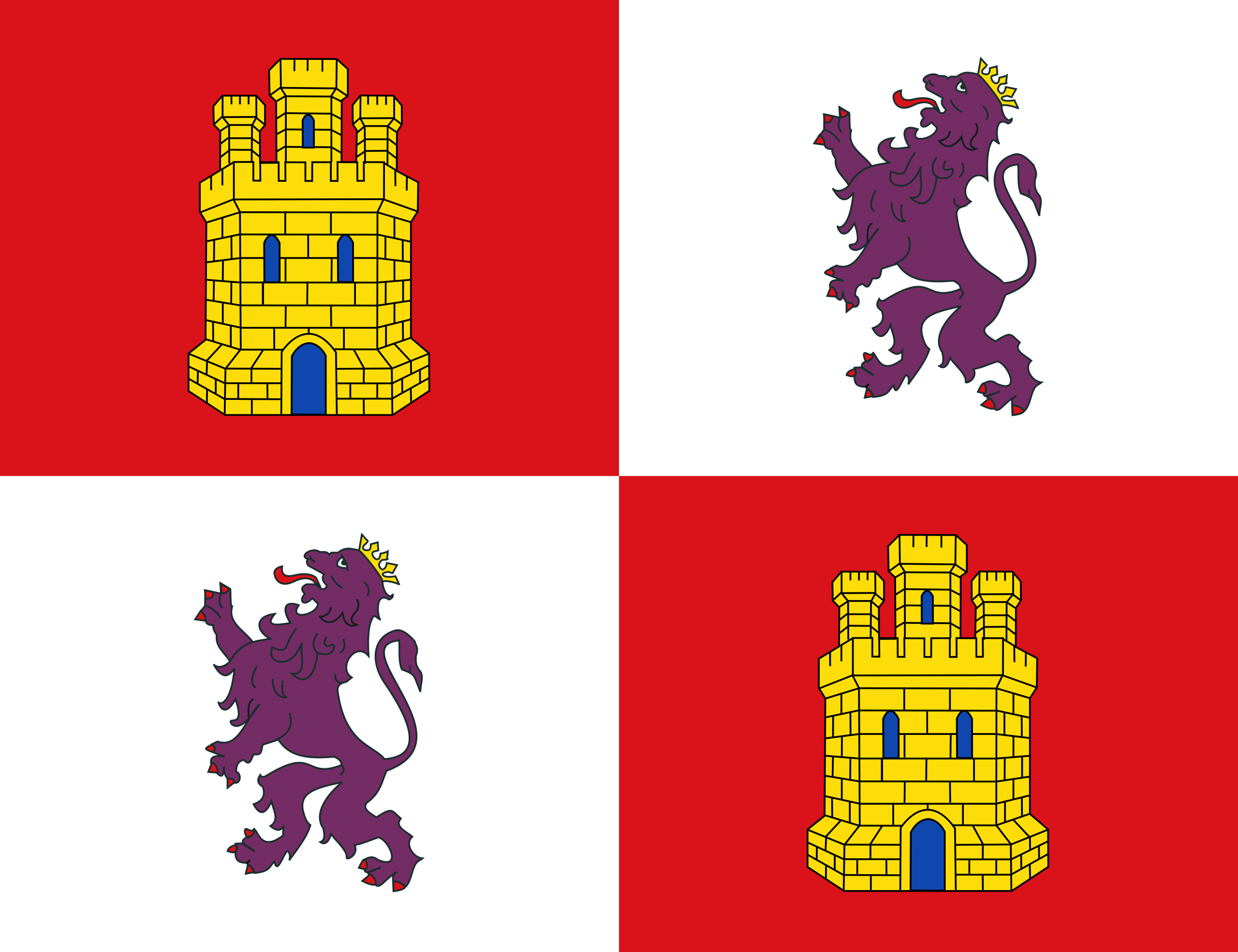 Castilla y León
Castilla y León
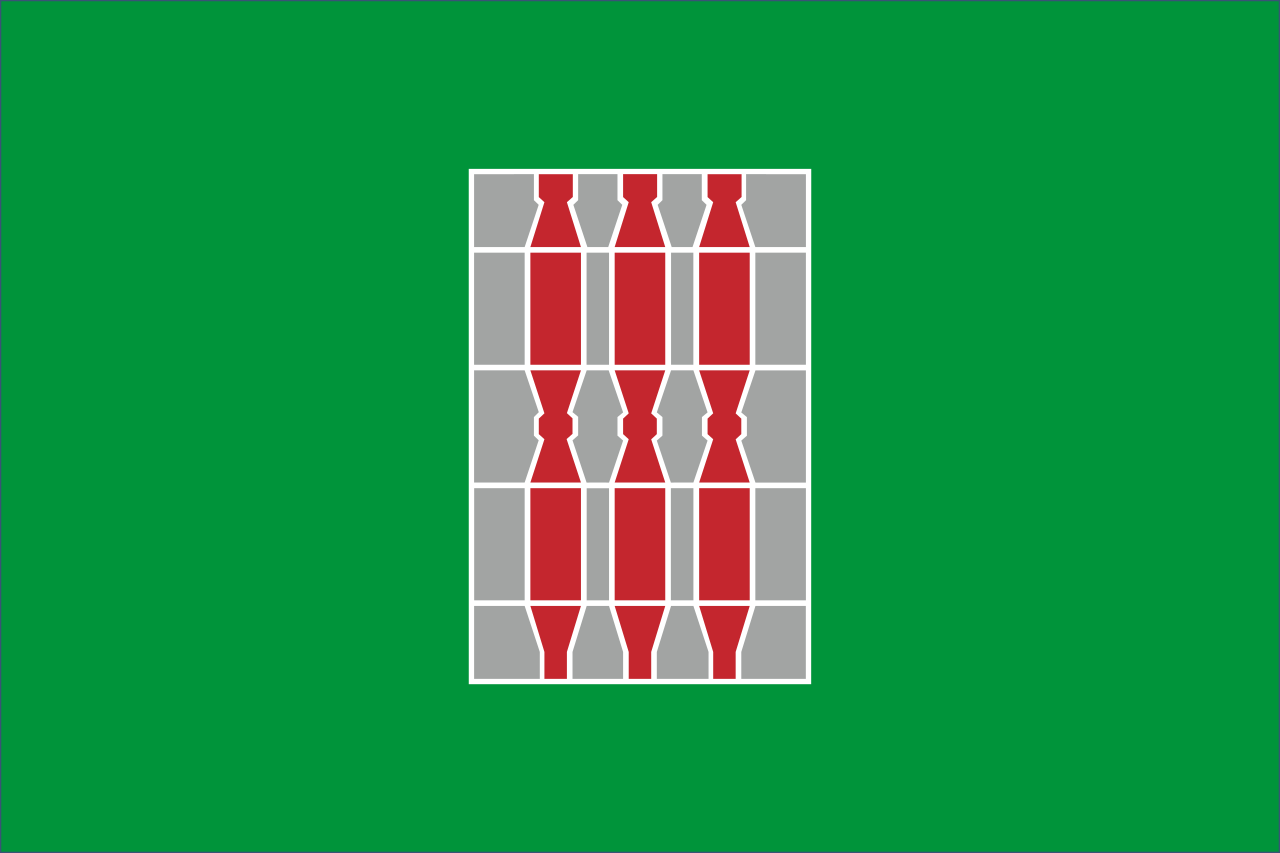 Umbria
Umbria
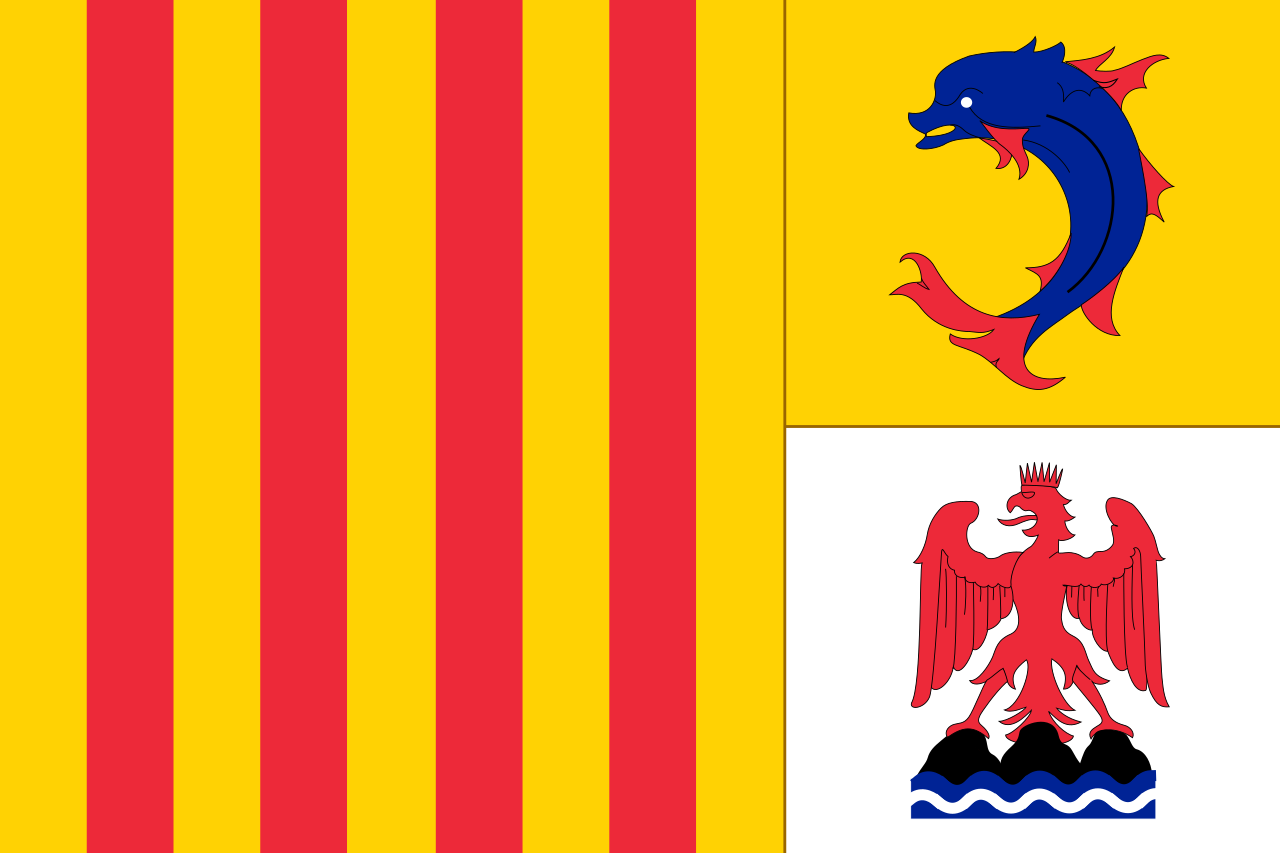 Provence-Alpes-Côte d´Azur
Provence-Alpes-Côte d´Azur